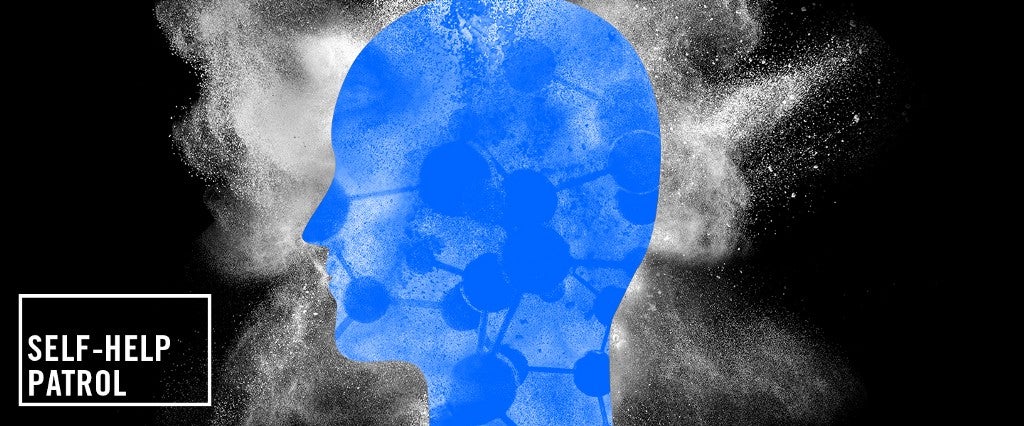Planet Earth is not exactly lacking in ingestible white powders that will make you feel more awake and focused. But nootropics, which include natural brain-boosting supplements (like ginko and other herbs) in addition to synthetic “smart drugs” (like aniracetam, the focus of today’s column) have a few advantages, chief among them their availability on the internet.
You can quickly and easily order nootropics from sites like Powder City, a Pennsylvania-based company that delivered my order of aniracetam (and several other -tams) to my office in California within days. They’re cheap: 10 grams of aniracetam set me back less than $8. They’re ostensibly non-addictive and conflict-free (no traffickers were exploited in the production or shipment of these powders). They don’t come from the doctor’s office, which means they’re not logged in any medical records. And they won’t cause any sort of overdose or side effects (aside from a potential headache) or kill me. No wonder about $1 billion worth of these drugs were sold last year.
Do they work? Like most of the other methods of self-help reviewed in this series, it depends on whom you ask.
Though synthetic nootropics have existed since 1964, when a Belgian scientist created piracetam (which mimics the chemical structure of an amino acid and is said to boost cognition), doctors have done very little research on their effects on healthy humans. Though piracetam is taken more seriously in countries like the U.K., where you need a prescription to get it, the FDA considers all the -tams to be without any medical value, in part because their mechanism for action on the brain is not well understood. Aniracetam, supposedly a more potent version of piracetam, has been tested in animals and people with Alzheimer’s; according to its boosters, it promotes memory, motivation, focus and good moods.
Sounds dreamy—if not too good to be true.
Goal
Use aniracetam to elevate my brain functioning to new, hyper-productive heights.
Strategy
Powder City conveniently provides a small spoon to dose with. Two scoops of the powder — dissolved into something fat soluble (I chose almond milk or yogurt) — is said to kick in within 20 to 30 minutes. It tastes, unsurprisingly, like ground up pills. I took a total of six doses (1500 milligrams each) over the past week.
Results
I take the first dose on the morning of a typically busy day. Right on schedule, about 20 minutes after dosing, I can feel a wave of something — is it energy? — creeping up my spine in a slow crescendo. Do I feel more alert or is just the techno we’re playing over the office speakers? My typing speed increases accordingly, but it’s hard to say if I’m thinking more sharply and more clearly, or if I’m just thinking more thoughts, which is not necessarily a good thing. As the music transitions to the new James Blake album, I don’t notice any mood-enhancing effects; my responses to pitch emails from writers are reduced to one-sentence rejections.
My next dose occurs the following afternoon, a Friday, as I prepare to close out the work week in time for an office happy hour. While my two scoops of aniracetam don’t keep me from procrastinating until the moment drinks are served, I do feel a bit more pleasant and chatty as I share cocktails and conversation with coworkers. Afterward, as I brave the freeways during Friday rush hour, I feel a slight wave of euphoria as I stare out at the smog-enhanced purple clouds at sunset. I start to wonder whether aniracetam is better suited for social and logistical tasks than intellectual ones. If anything can help me get through rush hour, that’s a good thing, right?
The next day, I decide to dose before running my weekend errands, and I feel a bit of this mood enhancement once more. With aniracetam’s dubious magic operating on my brain, I’m less annoyed that I have to spend my limited free time cleaning, putting clothes away and running around town. The insufferable but essential task of hunting down light-blocking curtains for my bedroom while hungover is rendered manageable, and I’m able to narrow down the choice of fabrics from thousands to one in a mere 30 minutes.
On Monday, I return to aniracetam to power through my deadlines (on this column, among other pieces) but I mostly spin my wheels, descending into a K-hole of personal essays and interviews about the effects of nootropics. “I felt that the piracetam helped me to work within the realm of the abstract, and make the kind of associations that I needed,” a transhumanist writer told the New Yorker in 2009. “Nootropics have gone mainstream, finding devotees among the 21st century’s white-collar elite,” declared the Observer last year. Omg— that’s me.
But far from becoming a devotee, I could take aniracetam or leave it. I was spared the headaches, but I didn’t exactly slay the work week — at least, no more than I do on my usual regimen of cold-brew.
Zak Stone is MEL’s executive editor.
More from Self-Help Patrol:
- Self-Help Patrol: The Road to Ultimate Happiness Is Paved in Garbage
- Self-Help Patrol: 420-Friendly Fitness
- Self-Help Patrol: Finding My Muse

